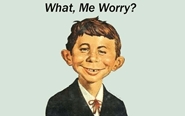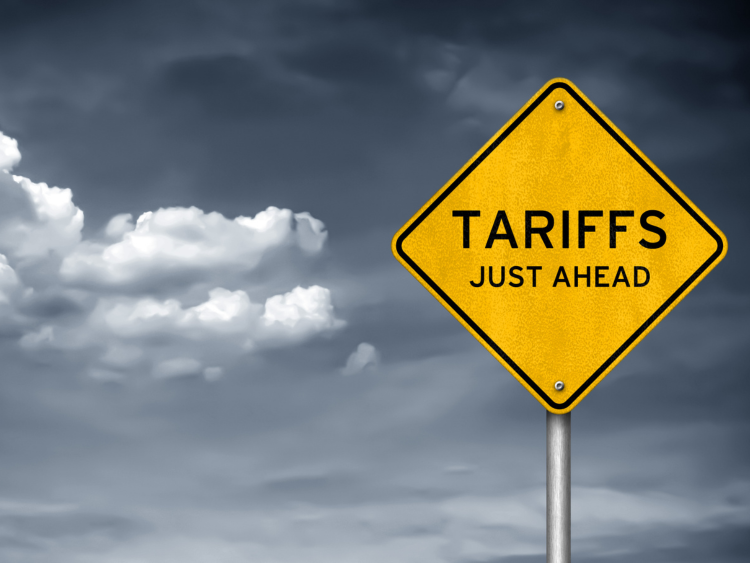Trade Cases

Leibowitz on Trade: Section 232 Country Quotas
Written by Lewis Leibowitz
May 3, 2018
Trade attorney Lewis E. Leibowitz has been providing updates on the Section 232 tariffs, product exclusions and country exclusions on almost a daily basis over the past couple of weeks. We have been sharing his thoughts with our readers as many of you are (or will be) impacted by the existence of tariffs and/or quotas. It is also important to note that the quotas being negotiated are “hard” quotas, which is a first for the U.S. steel industry. Here is what Leibowitz shared with Steel Market Update on Wednesday:
Peter Navarro and Wilbur Ross have gone to China to discuss trade and tariff issues. On their last day in Washington, they made some remarks about the steel and aluminum tariff measures announced Monday night. The picture is becoming clearer, but there are also more questions.
Today, I am focusing on the Ross and Navarro announcements that all countries that receive exemptions from the tariffs (so far, that is Argentina, Australia, Brazil, Canada, the EU, Korea and Mexico) “will have a quota and other restrictions which are necessary to defend the aluminum and steel industries from imports in defense of our national security.” (Navarro remarks to AISI/SMA conference in Washington). Secretary Ross echoed these sentiments in an interview on Tuesday with CNBC, as did Sarah Huckabee Sanders, the President’s Press Secretary.
My basic question, which I am trying to answer over the next few days, is “Which is better—tariffs or quotas?” The answer is not as easy as it appears.
First, quota agreements are generally inconsistent with the agreements governing the World Trade Organization unless they meet the stringent requirements of the Agreement on Safeguards. This is the basis for the EU insistence, before the May 1 deadline, that any exemption of the EU from the steel or aluminum tariffs must be unconditional. That stance seems flatly inconsistent with the statements of Peter Navarro and Wilbur Ross. The United States has declared that the “national security” tariffs are governed by no rules at all. If that position prevails in the WTO, other countries may follow the same path and the current world trading system could be in considerable trouble.
Second, we have the quota provisions of the Korea steel agreement, which became effective on May 1. It creates 53 or 54 categories of steel products and quotas for each of these categories. Quantities may not be transferred from one category to another. There are no aggregate floors for steel imports from Korea, which is different from the VRA days. For example, the quota for sheet piling from Korea is zero—why did they bother? Because all the products covered by the President’s Proclamation must be covered by the agreement. These appear to be import quotas rather than export quotas (like the old steel VRAs) administered by the exporting country governments. According to Customs and Border Protection, once a quota has been filled, consumption entry (normal entry for those unfamiliar with Customs terminology) is not permitted.
While the quotas listed on the Customs website are annual quantities, quarterly (Jan-Mar, etc.) imports may not exceed 30 percent of the annual quota. When each quota is filled for the quota or the year, the gate will slam down, and importers will need to find a place for their “orphaned” goods. Quota goods that are not permitted entry must be sent back out of the country, placed in a foreign trade zone or bonded warehouse, or destroyed under Customs supervision. They may be sent into the country when the quota opens up for the next quarter or in a new year, but that is going to be a high-tension game because some steel products will have enough of a backlog to fill the quota in a few hours or even a few minutes after it opens back up. Traders willing to play that game will need major-league-level help to navigate the quota-opening chaos. If the Korean quota agreement is a model for other countries, I wonder if they are better than tariffs.
Third, it is uncertain whether (and how) product exclusions would relate to quota agreements. The regulations that were issued by the Commerce Department in March only say that the tariffs would not apply to products receiving an exclusion; however, products receiving an exclusion, while in theory would not count against the quota limits, are not explicitly exempted from quotas. The March 19 regulations provide:
“the requester will be able to rely upon the approved exclusion request in calculating the duties owed on the product imported in accordance with the terms listed in the approved exclusion request. [83 Federal Register p. 12111 (March 19, 2018)]”
There is nothing in there that mentions an exclusion for a product subject to a quota agreement. If a company has obtained an exclusion, would that benefit the company over time? It would, if the exclusion was exempted from the quota limits; however, a very specific “quota” would apply to the excluded product itself (the quantity requested by the company requesting the exclusion).
While we are speculating, perhaps some quota agreements will be styled as tariff rate quotas (or TRQs in trade parlance). There are a number of these agreements affecting other commodities. If a product is governed by a TRQ, “in quota” merchandise is subject to a low duty rate and “over quota” merchandise is subject to a higher rate. Excluded products could, perhaps, always be entered at the lower duty rate (which could be the normal tariff on steel products—zero). However, even excluded products would still be subject to antidumping or countervailing duties, which are quite common on basic steel products.
Over the next 30 days, several countries in addition to those already exempt may be asking for exemptions. Be careful what you wish for—you might get it.
Lewis Leibowitz
The Law Office of Lewis E. Leibowitz
1400 16th Street, N.W.
Suite 350
Washington, D.C. 20036
Phone: (202) 776-1142
Fax: (202) 861-2924
Cell: (202) 250-1551

Lewis Leibowitz
Read more from Lewis LeibowitzLatest in Trade Cases

Price on Trade: The foolishness of free trade with controlled economies
It was only a matter of time before a shutdown happened. And, no, we aren’t talking about the federal government’s lapse in appropriations. On Oct. 9, Beijing announced a series of restrictions that will effectively shut down exports of rare earth elements, magnets, and certain downstream products vital to advanced manufacturing.

Trump pulls plug on trade talks with Canada after anti-tariff Reagan ad
US President Donald Trump took to social media late Thursday night to announce he was canceling trade talks with Canada.

Leibowitz: Renewed trade war with China over rare earths
On Oct.10, President Trump announced major increases in tariffs on Chinese goods. The trigger was a new regime of export controls on rare earth metals and products using those elements, including magnets, capital equipment, and catalysts for catalytic converters in cars and trucks.

Industry piles on new Section 232 steel derivative inclusion requests
The Department of Commerce received 97 submissions from producers, manufacturers, and groups seeking Section 232 tariff coverage for steel and aluminum derivative products.

Price on Trade: New EU steel tariffs don’t mean the US should weaken its stance
Any steel imports into the EU that exceed the new, lower quota level would be subject to a 50% tariff, which represents a major increase from the EU’s current 25% out-of-quota tariff. This move would largely align the EU’s steel tariff rate with Canada and the United States.
